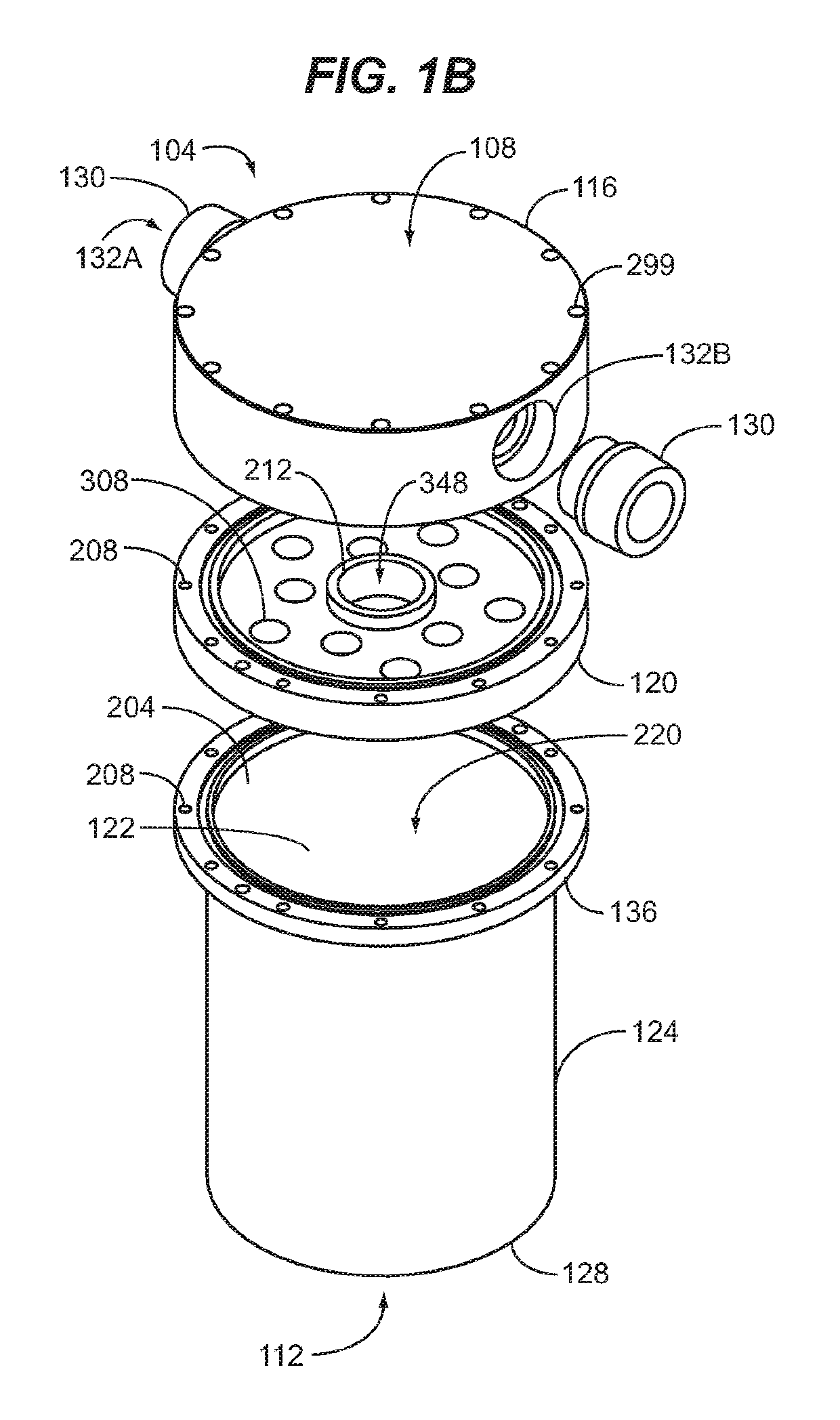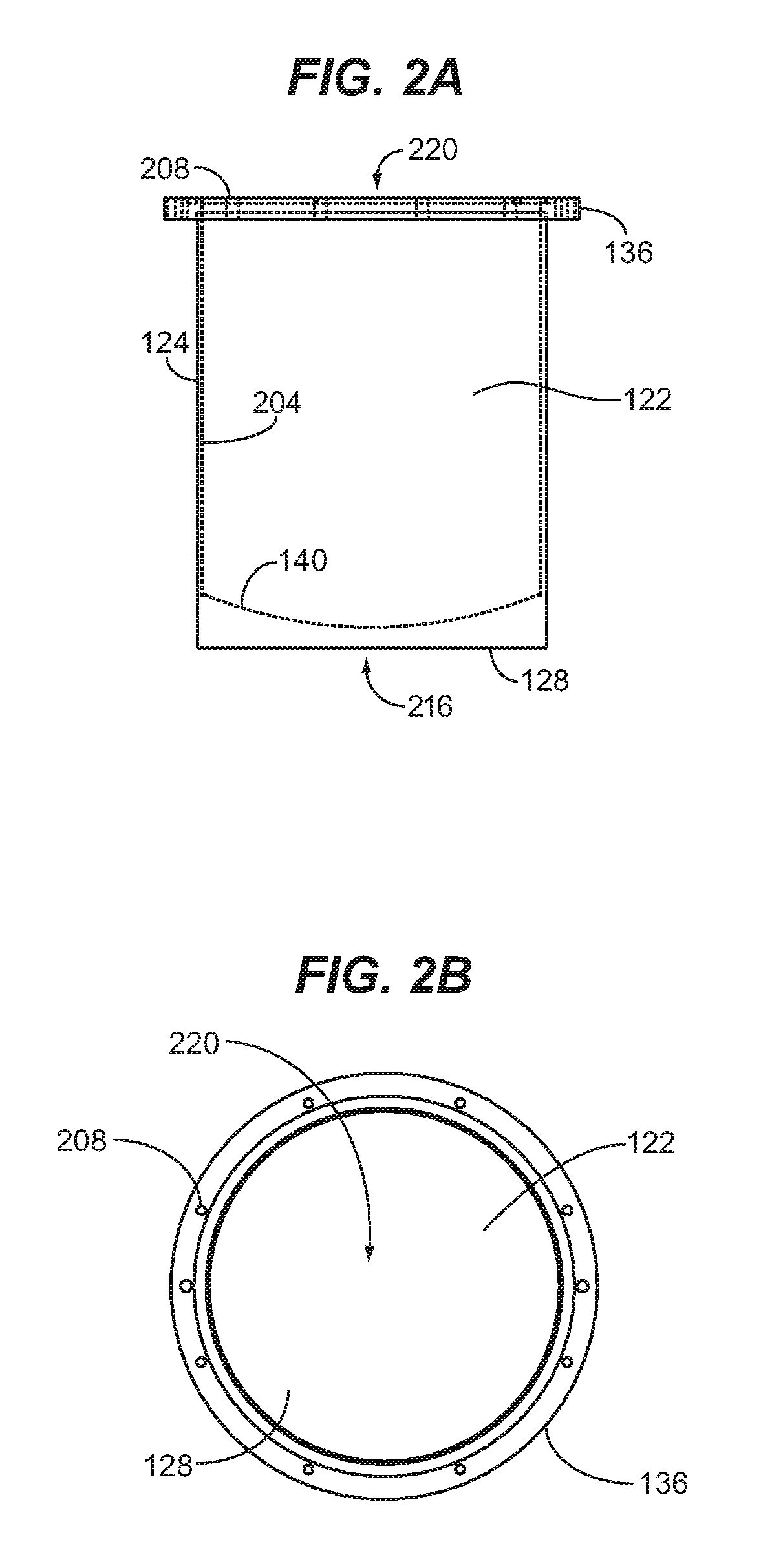Fuel treatment module, system and method
a fuel treatment module and fuel treatment technology, applied in the direction of combustion air/fuel air treatment, machines/engines, mechanical equipment, etc., can solve the problems of system inability to achieve photon saturation, limited in the amount of far infrared treatment that can be applied to the volume of fuel, etc., to achieve easy connection, improve fuel efficiency, and reduce emissions
- Summary
- Abstract
- Description
- Claims
- Application Information
AI Technical Summary
Benefits of technology
Problems solved by technology
Method used
Image
Examples
Embodiment Construction
[0031]The fuel treatment module 104 herein benefits from the property of liquid substances, such as liquid hydrocarbon fuel, that when an infrared emitting element 320 (FIGS. 3, 4, 5, 10A-10F) is brought close to such liquid substances, the infrared radiation (in the form of photons) emitted from the infrared emitting element 320 is absorbed by molecules in the liquid, transferring energy to the molecules and exciting them. (Hydrocarbon molecules in fuel are capable of utilizing the infrared radiation between 3 and 20 μm (micron) wavelengths to cause such excitation of the fuel.) The fuel treatment module 104 herein employs a plurality of infrared emitting elements 320, which in a preferred embodiment are infrared emitting ceramic elements, designed to emit infrared radiation at 3 to 20 μm wavelengths that are disposed within a canister 124. The canister 124 and its internal components both facilitate and maximize direct and indirect exposure of fuel to the infrared emitting element...
PUM
| Property | Measurement | Unit |
|---|---|---|
| wavelengths | aaaaa | aaaaa |
| wavelengths | aaaaa | aaaaa |
| wavelengths | aaaaa | aaaaa |
Abstract
Description
Claims
Application Information
 Login to View More
Login to View More - R&D
- Intellectual Property
- Life Sciences
- Materials
- Tech Scout
- Unparalleled Data Quality
- Higher Quality Content
- 60% Fewer Hallucinations
Browse by: Latest US Patents, China's latest patents, Technical Efficacy Thesaurus, Application Domain, Technology Topic, Popular Technical Reports.
© 2025 PatSnap. All rights reserved.Legal|Privacy policy|Modern Slavery Act Transparency Statement|Sitemap|About US| Contact US: help@patsnap.com



